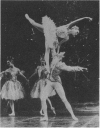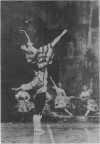Abstract
A study was conducted on members of the Cape Performing Arts Board (CAPAB) professional ballet company to determine the prevalence of hypermobility and to document the injuries sustained over a ten year period. If forward flexion, which is acquired through training, is excluded as a parameter the difference in hypermobility between dancers and controls is not statistically significant. Considering the stresses imposed on the musculoskeletal system, the number of injuries was surprisingly low. Ligamentous injuries about the ankle and knee were both common and accounted for the major morbidity. There were minor differences in the nature and severity of injuries in the male and female dancers. Back injuries, fractures and osteoarthrosis were uncommon and shin splints was not recorded in any of the dancers.
Full text
PDF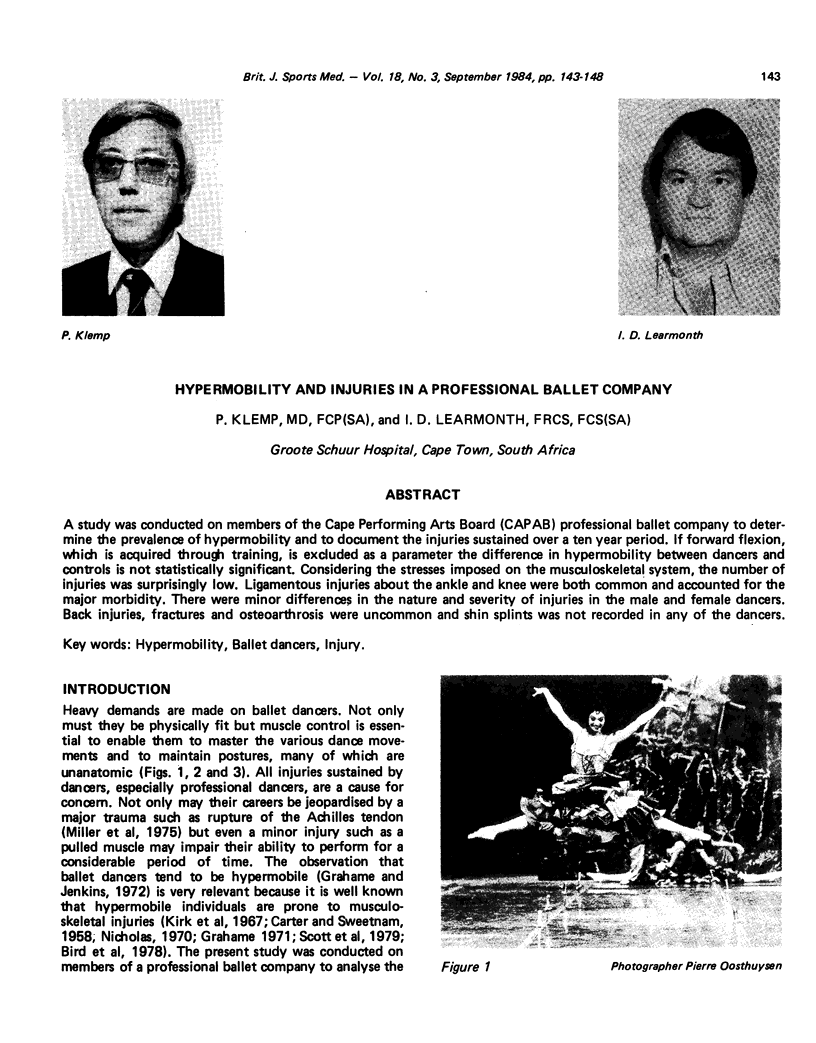
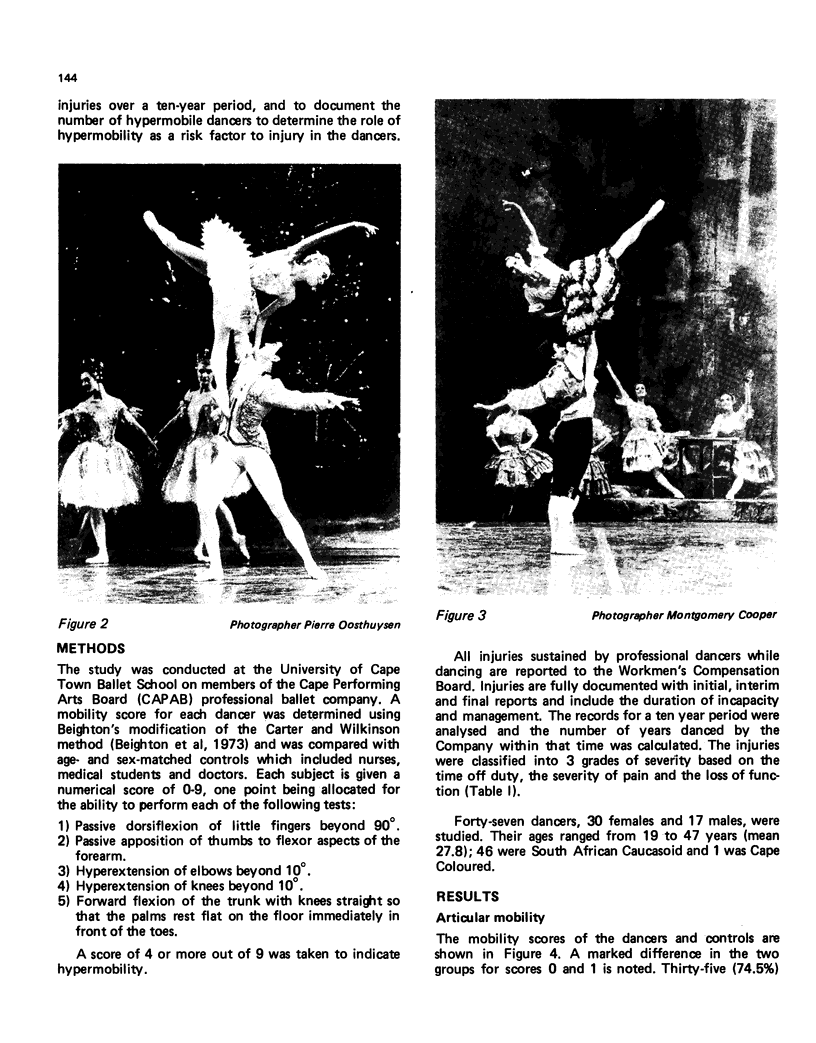
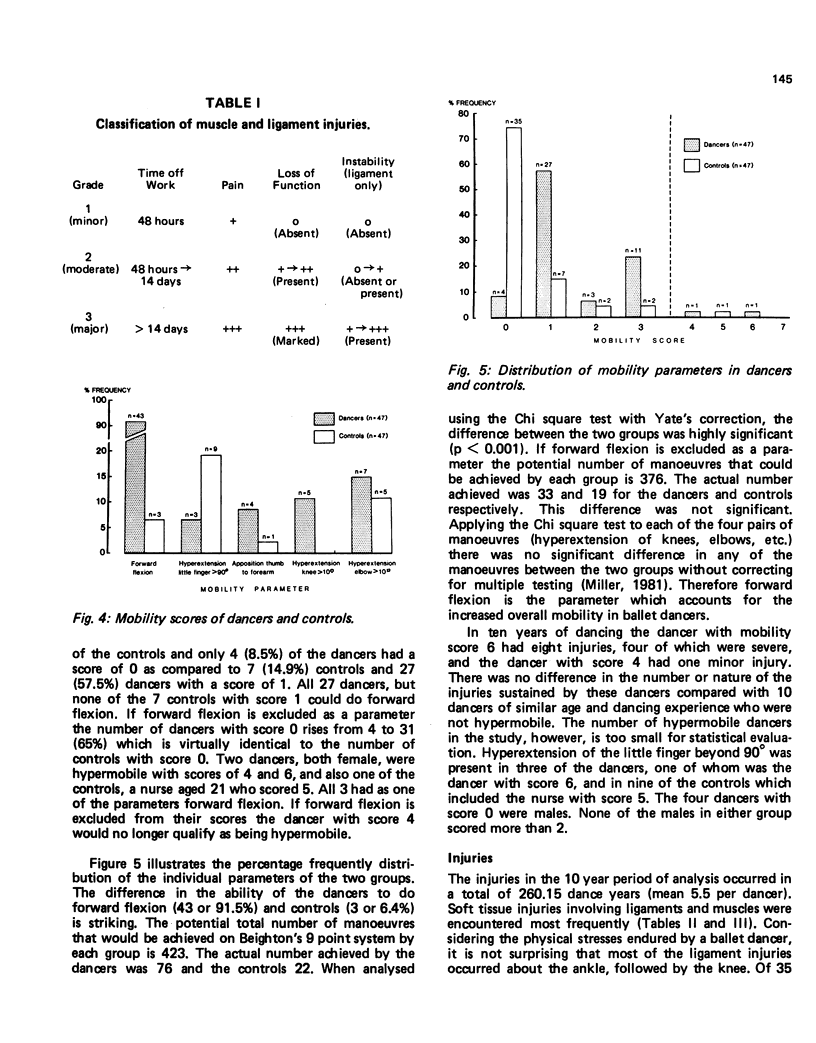
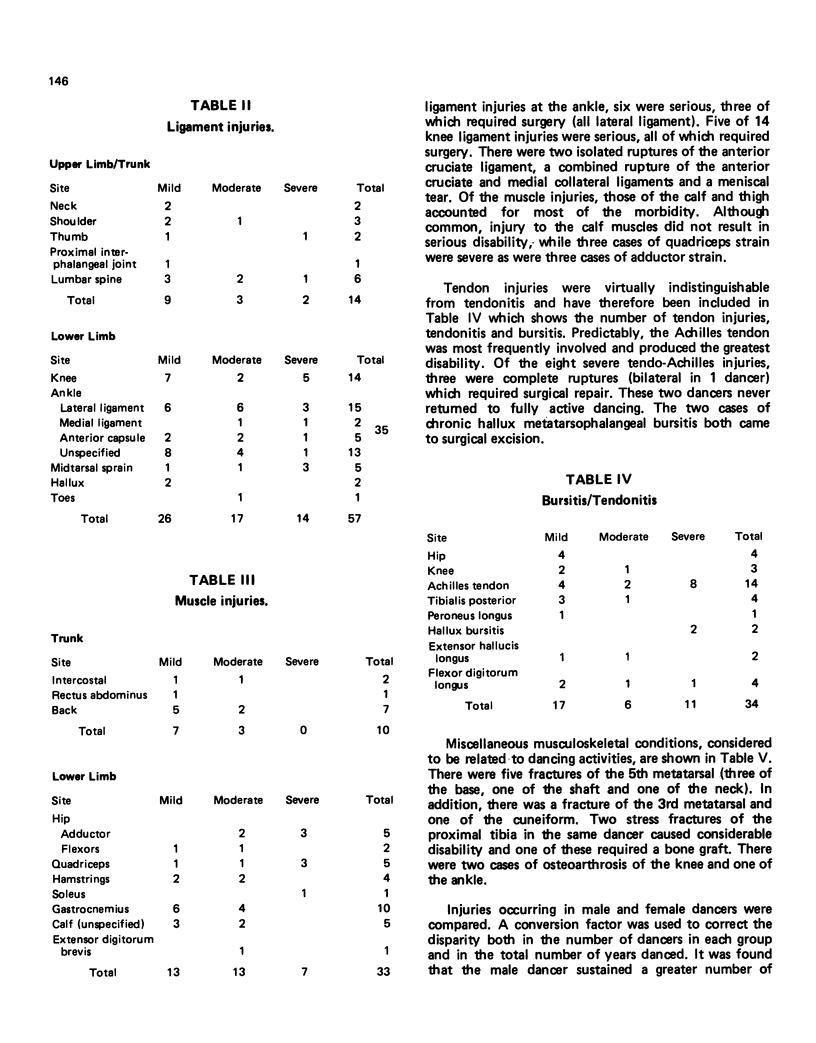
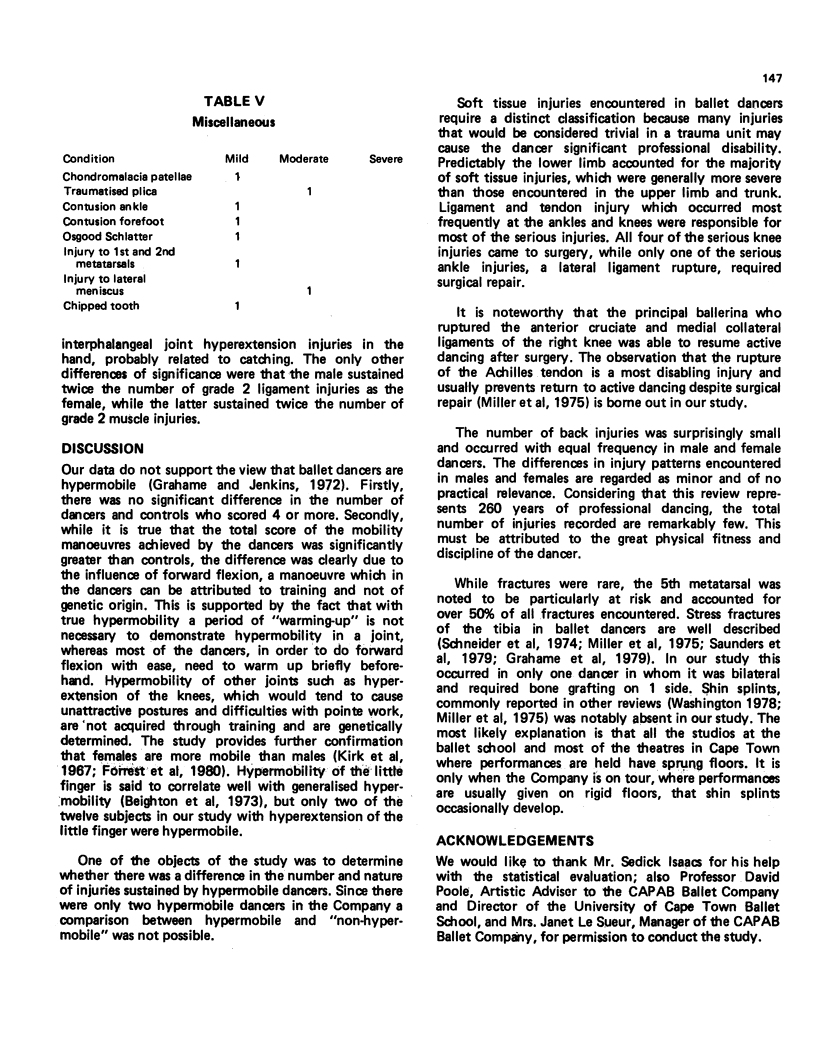
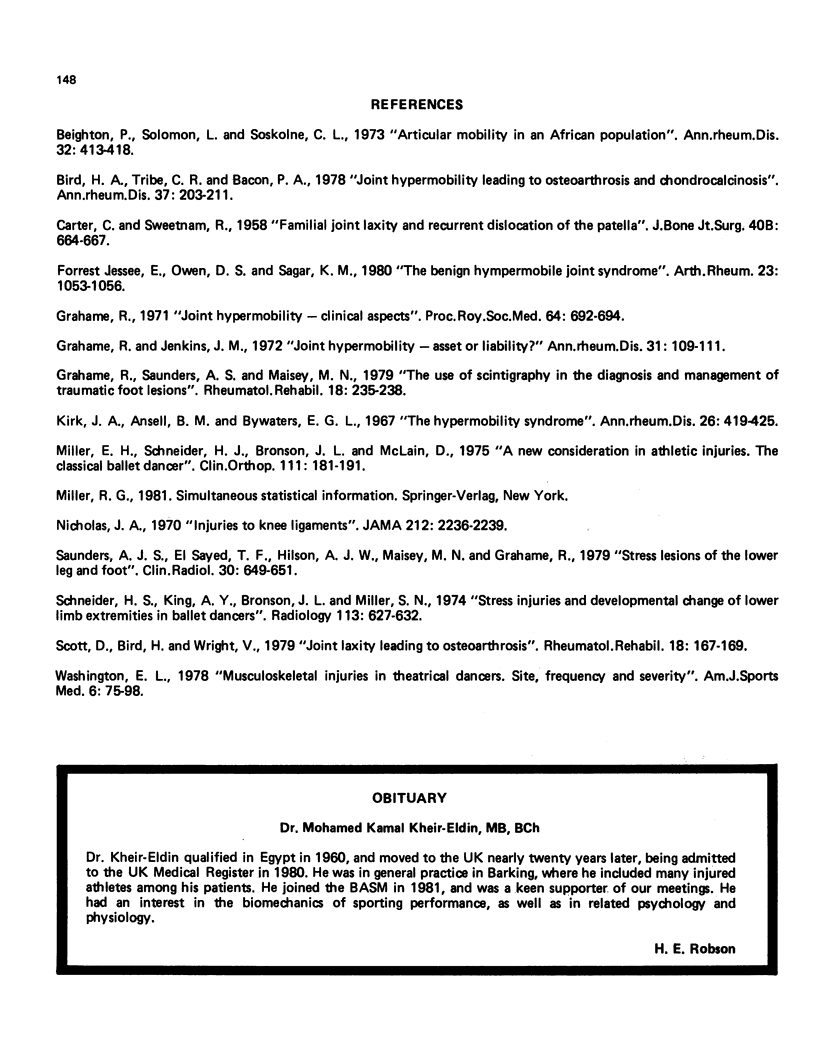
Images in this article
Selected References
These references are in PubMed. This may not be the complete list of references from this article.
- Bird H. A., Tribe C. R., Bacon P. A. Joint hypermobility leading to osteoarthrosis and chondrocalcinosis. Ann Rheum Dis. 1978 Jun;37(3):203–211. doi: 10.1136/ard.37.3.203. [DOI] [PMC free article] [PubMed] [Google Scholar]
- CARTER C., SWEETNAM R. Familial joint laxity and recurrent dislocation of the patella. J Bone Joint Surg Br. 1958 Nov;40-B(4):664–667. doi: 10.1302/0301-620X.40B4.664. [DOI] [PubMed] [Google Scholar]
- Grahame R., Saunders A. S., Maisey M. The use of scintigraphy in the diagnosis and management of traumatic foot lesions in ballet dancers. Rheumatol Rehabil. 1979 Nov;18(4):235–238. doi: 10.1093/rheumatology/18.4.235. [DOI] [PubMed] [Google Scholar]
- Jessee E. F., Owen D. S., Jr, Sagar K. B. The benign hypermobile joint syndrome. Arthritis Rheum. 1980 Sep;23(9):1053–1056. doi: 10.1002/art.1780230914. [DOI] [PubMed] [Google Scholar]
- Miller E. H., Schneider H. J., Bronson J. L., McLain D. A new consideration in athletic injuries. The classical ballet dancer. Clin Orthop Relat Res. 1975 Sep;(111):181–191. doi: 10.1097/00003086-197509000-00026. [DOI] [PubMed] [Google Scholar]
- Nicholas J. A. Injuries to knee ligaments. Relationship to looseness and tightness in football players. JAMA. 1970 Jun 29;212(13):2236–2239. doi: 10.1001/jama.212.13.2236. [DOI] [PubMed] [Google Scholar]
- Saunders A. J., El Sayed T. F., Hilson A. J., Maisey M. N., Grahame R. Stress lesions of the lower leg and foot. Clin Radiol. 1979 Nov;30(6):649–651. doi: 10.1016/s0009-9260(79)80010-0. [DOI] [PubMed] [Google Scholar]
- Schneider H. J., King A. Y., Bronson J. L., Miller E. H. Stress injuries and developmental change of lower extremities in ballet dancers. Radiology. 1974 Dec;113(3):627–632. doi: 10.1148/113.3.627. [DOI] [PubMed] [Google Scholar]
- Scott D., Bird H., Wright V. Joint laxity leading to osteoarthrosis. Rheumatol Rehabil. 1979 Aug;18(3):167–169. doi: 10.1093/rheumatology/18.3.167. [DOI] [PubMed] [Google Scholar]
- Washington E. L. Musculoskeletal injuries in theatrical dancers: site frequency, and severity. Am J Sports Med. 1978 Mar-Apr;6(2):75–98. doi: 10.1177/036354657800600207. [DOI] [PubMed] [Google Scholar]






